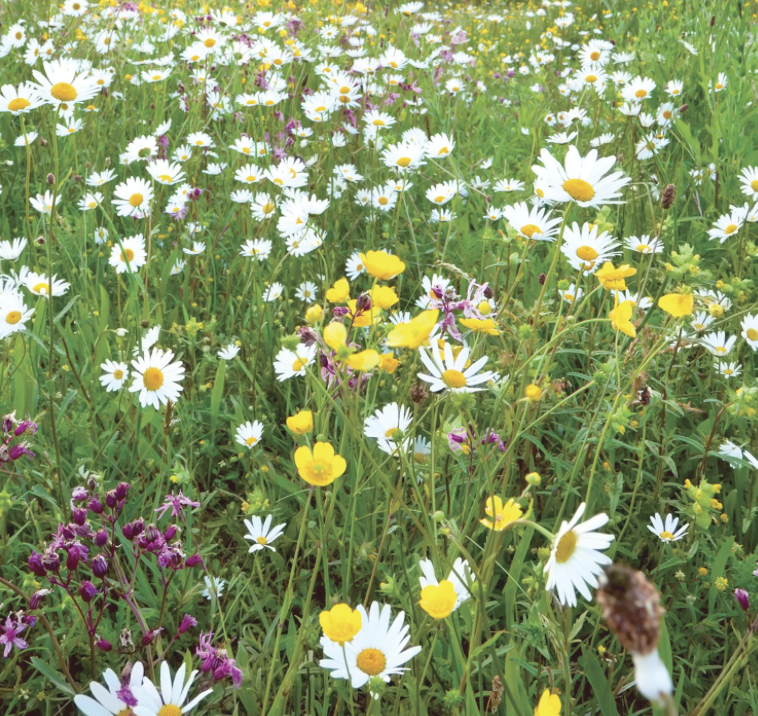Wild Flower Turf – Traditional Meadow Mix
*Subject to season and availability
Traditional Meadow mix is a blend of 31 native wildflowers and 3 grasses typically found in an old fashioned hay meadow.
Please enquire for prices and avalibilty
Please call 01872 870904 to place your order
Ideal for a sunny spot where a low maintenance and lots of biodiversity can combine to create a relaxed feel. Prefer a more manicured look? Keeping the edges trimmed and mowing paths through your Traditional Meadowmat gives a more formal appearance.
Key Points
- The majority of plant species in Traditional Meadowmat are perennial. That means that if they are happy in your garden they will grow back year after year.
- Flowering Time: May – July (depending on local weather conditions).
- Meadowmat is mown before despatch to minimise damage to plants. It will not be in flower when it is delivered.
- For flowers in its first season, install Traditional Meadowmat before the end of march to allow plants to establish.
- A standard roll of Traditional Meadowmat covers 1 square metre of prepared soil and weights up to 25Kg. We recommend having two people to install it.
- The balance of plant species is affected by soil type, management, pollinator populations and local climatic conditions. Your Traditional Meadowmat will change appearance from year to year, which is one of the reasons we love it so much.
What is Meadowmat?
If you’re not familiar with Meadowmat, it’s an innovative landscaping material that allows you to establish dense planting very quickly. More reliable than seeding and less time consuming than plugplanting, Meadowmat can only be described as a flower garden on a roll. It’s installed and established just like grass turf but needs less ongoing maintenance than a lawn.
Maintaining Traditional Meadowmat requires a different approach to any other type of gardening. Fertilisers and pesticides can stay in the shed – you won’t be needing those. Neither will you need your lawn mower. Meadowmat can be left to grow unchecked between March and August. At the end of summer it is cut back to a height of 10 – 15 cm and all vegetation is removed. Mow once or twice in autumn to remove excess growth and leave over winter and your Traditional Meadowmat will naturally start growing when the soils warm up in spring.
Growing Traditional Meadowmat – Soil and Aspect
Traditional Meadowmat prefers to grow in full sun and moist, but well drained low fertility soil. It is happy on level surfaces or slopes. Happiest in a fairly neutral pH but will tolerate all but the most acidic or alkaline soils
What’s In Traditional Meadowmat?
Please note, percentages refer to the weight of the seed in the growing mix and do not necessarily reflect the proportions of mature plants.
20% native grasses
To help prevent soil drying out, provide shelter for insects, food for birds and perches for butterflies:
- Sheep’s Fescue
- Slender Creeping Red Fescue
- Crested Dogstail
80% native wildflowers
- Autumn hawkbit
- Betony
- Birdsfoot Trefoil
- Bladder Campion
- Catsear
- Common Knapweed
- Common Sorrel
- Common St Johns Wort
- Common toadflax
- Common Vetch
- Cowslip
- Daisy
- Field Scabious
- Lady’s Bedstraw
- Meadow Buttercup
- Meadow Cranesbill
- Meadowsweet
- Musk Mallow
- Ragged Robin
- Red Campion
- Red Clover
- Ribwort Plantain
- Rough Hawkbit
- Salad Burnet
- Selfheal
- Tufted Vetch
- White Campion
- Wild Carrot
- Wild Marjoram
- Yarrow
- Yellow Rattle

